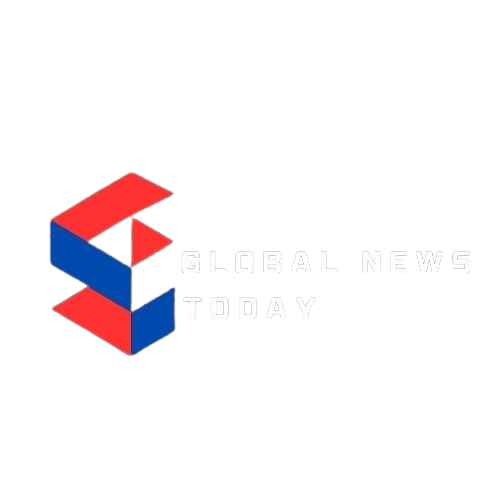The troubled Boeing Starliner spacecraft is being sent back to Earth this Friday evening, NASA confirmed Wednesday.
In a news conference ahead of the embattled spacecraft’s re-entry into our atmosphere, officials from NASA’s Commercial Crew and International Space Station Program said that, weather permitting, the uncrewed spacecraft will depart from the International Space Station (ISS) at approximately 6:04 p.m. ET Friday.
NASA and Boeing are targeting approximately 12:03 a.m., Saturday for the landing at White Sands Missile Range in New Mexico. Everything is on track for the unmanned craft to return to Earth, they said, and crews have been busy packing up the craft this week and getting it configured for its upcoming flight.
“It’s been a journey to get here and we’re excited to have Starliner” come home, said NASA’s commercial crew program manager Steve Stich.
Anthony Vareha, a flight director with NASA, told reporters that the Starliner will now use a modified flight plan to better accommodate an uncrewed vessel — Friday’s departure will see the Starliner thrust farther back from the ISS. Officials said 27 of the craft’s 28 thrusters appear to be working properly and they’re anticipating a successful return.
They also said the astronauts have been switched over to a long-term program to keep them happy and healthy in their now eight-month-long mission, adding that they have upped their exercise regimes and are focusing on cardiovascular fitness and resistance training.
Even though their mission focus has changed, “they’re just as dedicated for the success of human spaceflight going forward,” Vareha said.
Their blue Boeing spacesuits will return with the capsule, along with some old station equipment.
Veteran astronauts Butch Wilmore and Suni Williams departed Earth in early June for the ISS and were expected to return eight days later. However, the trip was marred by thruster failures and helium leaks, which raised doubts about the Starliner capsule’s ability to return to Earth safely and has left the astronauts in space for much longer than originally anticipated.

Get daily National news
Get the day’s top news, political, economic, and current affairs headlines, delivered to your inbox once a day.
On Aug. 24, NASA announced that Williams and Wilmore will return to Earth on a SpaceX vehicle early next year, deeming issues with Starliner’s propulsion system too risky to carry its first crew home.
To make room for them on SpaceX’s next taxi flight, the Dragon capsule will launch with two astronauts instead of the usual four. Two were cut late last week from the six-month expedition, which is due to blast off in late September. Boeing has to free up the parking place for SpaceX’s arrival.
NASA astronauts Suni Williams, left, and Butch Wilmore pose for a photo after leaving the operations and checkout building for a trip to launch pad at Space Launch Complex 41 Wednesday, June 5, 2024, in Cape Canaveral, Fla.
Chris O’Meara / The Associated Press
The agency’s decision, tapping Boeing’s top space rival to return the astronauts, is one of NASA’s most consequential in years. Boeing had hoped the test mission would redeem the Starliner program after years of development problems and over $2.1 billion in budget overruns since 2016.
Boeing is also struggling with quality issues in the production of commercial planes, its most important products.
Starliner’s June launch marked a high-stakes test mission required before NASA could certify the spacecraft for routine astronaut flights.
NASA astronauts Suni Williams and Butch Wilmore take their historic ride on Boeing’s CST-100 Starliner as it makes its first human spaceflight on Wednesday, June 5, 2024, from Cape Canaveral Space Force Station Space Launch Complex 41.
Ricardo Ramirez Buxeda/Orlando Sentinel/Tribune News Service via Getty Images
But Starliner’s propulsion system suffered a series of glitches beginning in the first 24 hours of its flight to the ISS, triggering months of cascading delays. Five of its 28 thrusters failed and it sprang several leaks of helium, which is used to pressurize the thrusters.
In July, Williams and Wilmore appeared in a NASA-hosted livestream from the ISS and said they felt confident the Starliner would get them home safely. They also said they were happy to spend extra time in space and were busy helping the ISS crew and running various experiments and tests while in orbit.
Wilmore said during the livestream that they went into the mission knowing there would be kinks, noting, “This is the world of test. This is a tough business.”

“Human spaceflight is not easy in any regime, and there have been multiple issues with every spacecraft that’s ever been designed, and that’s just the nature of what we do,” Wilmore said. “You know that mantra, ‘Failure is not an option.’”
The latest in-flight problems follow years of other challenges Boeing has faced with Starliner, including a 2019 uncrewed test failure where dozens of software glitches, design problems and management issues nixed its ability to dock to the ISS.
A 2022 repeat uncrewed test had a successful docking, but uncovered additional software issues and problems with some of the capsule’s thrusters.
Eager to have competing services and backup options, NASA hired SpaceX and Boeing to transport astronauts to and from the space station after the shuttles retired in 2011.
SpaceX’s first astronaut flight was in 2020. Boeing suffered so much trouble on its initial test flight without a crew in 2019 that a do-over was ordered. Then more problems cropped up, costing the company more than $1 billion to fix before finally flying with astronauts on board.
— With files from Reuters and The Associated Press
© 2024 Global News, a division of Corus Entertainment Inc.




